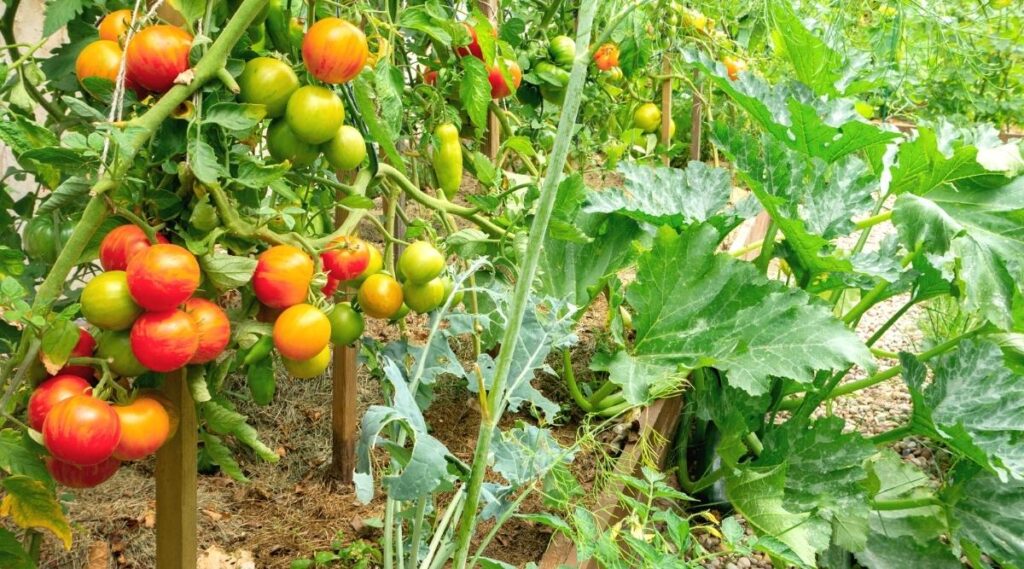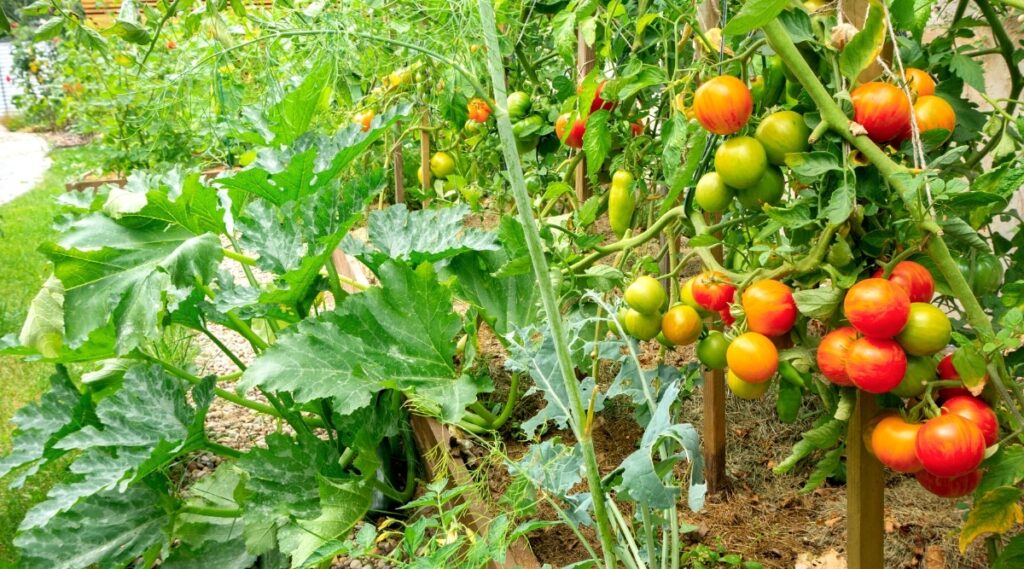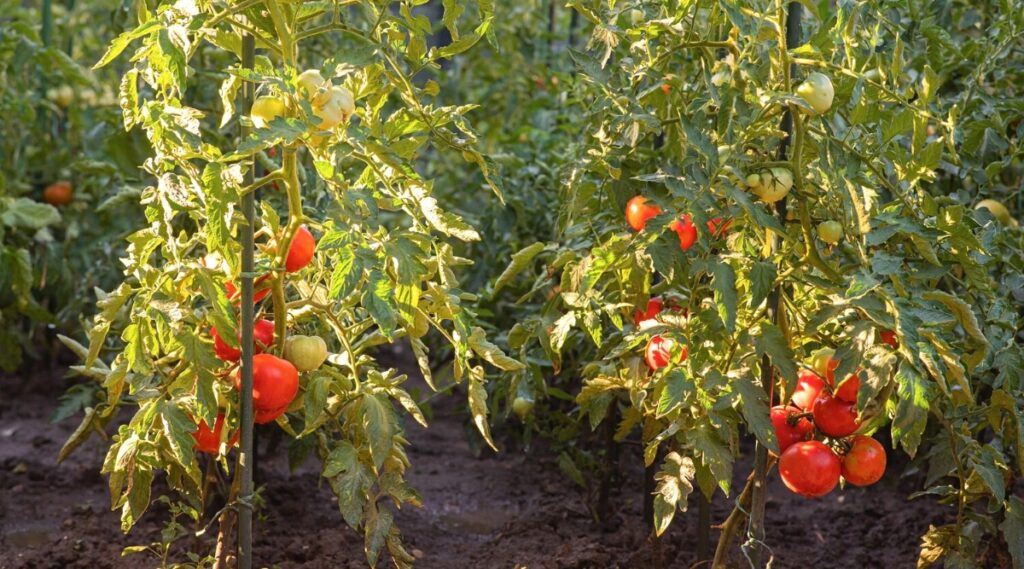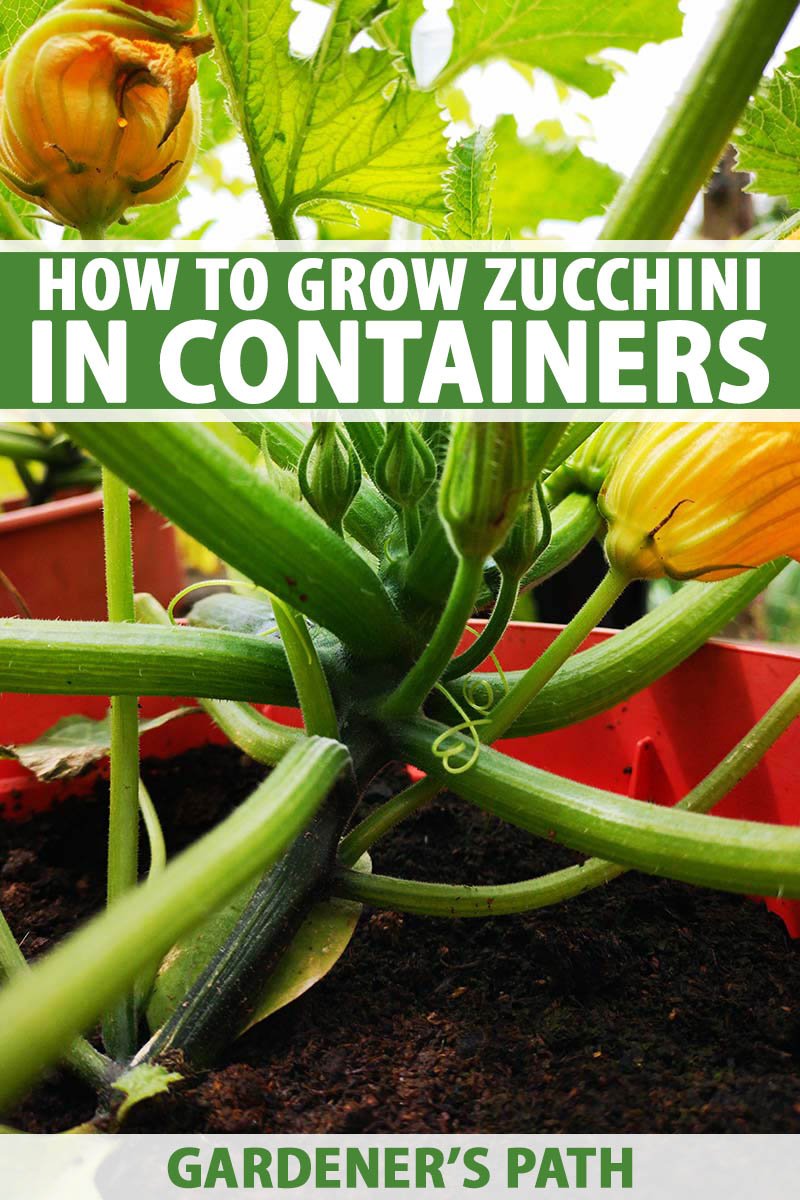In the realm of vegetable gardening, the question of whether zucchini can be planted deep like tomatoes raises an intriguing dilemma for horticultural enthusiasts. While the planting depth of certain crops is well-established, the notion of immersing zucchini seeds or seedlings further into the soil, akin to the practice with tomatoes, remains a subject of debate. This article delves into the scientific rationale behind deep planting techniques, explores the unique characteristics of zucchini plants, and ultimately offers insights into the potential outcomes of planting zucchini deep like tomatoes.

Benefits of Planting Zucchini Deep
Enhanced Root Development
Planting zucchini deep in the soil can promote enhanced root development. By planting the seedlings deep, you encourage the roots to grow downward and establish a strong root system. This deep root system allows the plants to access more nutrients and water from the soil, resulting in healthier and more vigorous growth.
Improved Nutrient Uptake
Deep planting of zucchini also improves nutrient uptake. As the roots grow deeper into the soil, they can access a greater range of nutrients that are essential for plant growth. These nutrients include nitrogen, phosphorus, and potassium, as well as micronutrients such as iron and magnesium. With increased access to these nutrients, the zucchini plants can thrive and produce higher yields.
Increased Drought Resistance
Planting zucchini deep can also enhance the plants’ ability to withstand drought conditions. With a deep root system, the plants can reach water sources that are deeper in the soil, even during dry periods. This increased drought resistance can be particularly beneficial in regions with limited water availability or in situations where irrigation is not easily accessible.
Considerations Before Planting Zucchini Deep
Soil Type and Drainage
Before planting zucchini deep, it is essential to consider the soil type and drainage conditions. Zucchini plants prefer well-draining soil to prevent waterlogging, which can lead to root rot. Sandy or loamy soil is ideal for zucchini cultivation as it allows excess water to drain away, preventing waterlogged conditions.
Overwatering Risks
While deep planting can enhance drought resistance, it is crucial to avoid overwatering the plants. Overwatering can lead to root rot and other diseases. It is essential to monitor the soil moisture levels and water the plants only when necessary. Using a moisture meter or regularly checking the soil’s moisture content with your fingers can help prevent overwatering.
Space Limitations
Deep planting zucchini requires ample growing space. Considering the space limitations before planting is essential. Zucchini plants can spread out and take up considerable space in the garden. It is important to ensure that there is enough room for the plants to grow and for air circulation to prevent the risk of diseases.

Step-By-Step Guide to Planting Zucchini Deep
Selecting the Right Variety
To plant zucchini deep successfully, it is crucial to select the right variety. Look for zucchini varieties that are known for their vigorous growth and adaptability to deep planting. Varieties like Black Beauty, Cocozelle, or Grey Grillerz are popular choices for deep planting due to their strong root systems and ability to thrive in various conditions.
Preparing the Planting Area
Before planting zucchini, prepare the planting area by removing any weeds, rocks, or debris. Till the soil to a depth of at least 8 to 10 inches to loosen it and improve drainage. Incorporating organic matter, such as compost or well-rotted manure, can also enrich the soil and provide essential nutrients for the zucchini plants.
Digging Deep Holes for Planting
Dig holes that are approximately 12 to 18 inches deep for planting the zucchini seedlings. Space the holes at least 24 to 36 inches apart to allow the plants to spread and grow effectively. Digging deep holes ensures that the roots have ample room to grow and establish themselves in the soil.
Planting the Zucchini Seedlings
Carefully remove the zucchini seedlings from their containers, taking care not to damage the roots. Place each seedling into a prepared hole, ensuring that the top of the root ball is level with or slightly below the soil surface. Firmly backfill the hole with soil, gently pressing it around the seedling to ensure good soil-to-root contact.
Mulching and Watering
After planting, apply a layer of organic mulch, such as straw or wood chips, around the base of the zucchini plants. Mulching helps retain moisture in the soil, suppresses weed growth, and regulates soil temperature. Water the plants thoroughly immediately after planting and continue to water deeply and regularly to keep the soil evenly moist throughout the growing season.
Comparing Zucchini and Tomato Plants
Different Growth Habits
Zucchini and tomato plants have different growth habits that should be taken into account. While tomatoes are typically upright and require staking or trellising for support, zucchini plants tend to be more sprawling and may require ample ground space or vertical support structures.
Variances in Root Systems
The root systems of zucchini and tomato plants also differ. Tomatoes have a more fibrous root system that spreads horizontally near the soil surface, while zucchini plants develop a more robust taproot system that grows deep into the soil. Understanding these variances is crucial when considering the planting depth and spacing requirements for each plant.
Diverse Nutrient Requirements
Zucchini and tomatoes have diverse nutrient requirements. While both plants benefit from well-balanced fertilization, zucchini tends to have a higher demand for nitrogen during its vegetative stage, whereas tomatoes may require more phosphorus and potassium for optimal fruit development. Adjusting fertilization practices accordingly is essential to ensure both plants receive the necessary nutrients for healthy growth.

Best Time to Plant Zucchini Deep
Considering Regional Climate
The best time to plant zucchini deep will vary depending on your regional climate. Zucchini is a warm-season vegetable that thrives in temperatures between 60°F and 95°F (15°C and 35°C). It is important to plant zucchini after the last frost date in your region when soil temperatures have warmed up and there is no risk of freezing temperatures.
Monitoring Soil Temperature
Monitoring soil temperature is essential when deciding the best time to plant zucchini deep. Use a soil thermometer to measure the soil temperature at a depth of 4 to 6 inches. Zucchini seeds germinate best when the soil temperature is around 70°F to 95°F (21°C to 35°C). To ensure optimal growth, be mindful of the soil temperature and avoid planting when it is too cold or too hot for zucchini to thrive.
Coordinating with Local Growing Seasons
Coordinating with local growing seasons and consulting gardening references specific to your region can provide valuable insights on the best time to plant zucchini deep. Local agricultural extension offices, gardening groups, or experienced gardeners in your area can also offer advice and recommendations based on their knowledge of local growing conditions.
Potential Challenges of Planting Zucchini Deep
Increased Vulnerability to Cold Temperatures
One potential challenge of deep planting zucchini is the increased vulnerability to cold temperatures. If unexpected frosts or freezes occur after planting, the deep-rooted zucchini plants may be exposed to colder soil temperatures, which can stress or damage the roots. It is important to be aware of the typical frost dates in your region and provide protection to the plants if needed.
Lack of Sunlight Exposure
Deep-planted zucchini may face challenges in receiving adequate sunlight exposure. As the plants grow deeper into the soil, they may have reduced access to sunlight, which is essential for photosynthesis and overall plant health. Planting zucchini deep in areas with ample sunlight or using pruning techniques to manage plant size and encourage sunlight penetration can alleviate this issue.
Risk of Excessive Soil Moisture
Deep planting zucchini can pose a risk of excessive soil moisture, especially in poorly drained soils or during periods of heavy rainfall. The deep root system may encounter waterlogging, which can lead to root rot and other moisture-related diseases. Maintaining proper drainage and monitoring soil moisture levels can help prevent these challenges and ensure healthy plant growth.

Maintenance Tips for Deep-Planted Zucchini
Regular Watering Practices
Maintaining regular watering practices is crucial for deep-planted zucchini. Deep-rooted zucchini requires consistent moisture, especially during dry periods. Water deeply and thoroughly, aiming to moisten the soil to a depth of at least 6 to 8 inches. Mulching can help retain moisture and reduce the frequency of watering, but it is essential to monitor the soil moisture levels and adjust watering accordingly.
Fertilization Requirements
Deep-planted zucchini benefits from regular fertilization to ensure optimal nutrient availability. Incorporating well-balanced organic fertilizers or using controlled-release fertilizers can provide the necessary nutrients for the plants. Adjust fertilization practices based on soil tests and plant nutrient requirements throughout the growing season to avoid nutrient deficiencies or excesses.
Managing Pest and Disease Issues
Like any garden plants, zucchini may face pest and disease challenges. Regular monitoring and proactive management are vital for maintaining healthy zucchini plants. Implement integrated pest management practices, such as using organic pest control methods, practicing crop rotation, and removing diseased plant material promptly. Regularly inspect the plants for signs of pests or diseases, and take appropriate measures to prevent or mitigate any issues that arise.
Harvesting Deep-Planted Zucchini
Monitoring Fruit Development
Monitoring the fruit development is essential to determine the optimal time for harvesting deep-planted zucchini. Zucchini should be harvested when the fruits are at a desirable size, typically between 6 and 8 inches long. Regularly check the plants for mature fruits and harvest them before they become oversize or overripe, as this can lead to a decline in flavor and texture.
Determining Optimal Harvest Time
To determine the optimal harvest time, observe the zucchini fruits’ color, size, and texture. The fruits should have a vibrant green color and a firm texture. Avoid harvesting zucchini that appear dull, discolored, or soft, as these may be indications of overmaturity. Harvesting regularly encourages the plants to continue producing new fruits throughout the growing season.
Proper Harvesting Techniques
To harvest zucchini, use a sharp knife or pruning shears to cut the fruit carefully from the plant. Hold the zucchini securely to prevent any damage or breakage while harvesting. It is important to cut the zucchini from the stem, leaving a small portion attached to the fruit. Avoid twisting or pulling the fruit, as this can damage the plants or affect future fruit production.

Alternative Planting Methods for Zucchini
Container Gardening
Container gardening can be a suitable alternative for growing zucchini, especially for gardeners with limited space. Select a large container with adequate drainage holes and fill it with a well-draining potting mix. Plant the zucchini seedlings at the appropriate depth and provide regular watering and fertilization. Containers should be placed in a sunny location, and proper support, such as a trellis or stake, may be necessary to accommodate the zucchini’s upward growth.
Vertical Growing
Vertical growing is another alternative for maximizing space and cultivating zucchini. By utilizing trellises, fences, or other vertical structures, gardeners can train zucchini plants to grow vertically. This method allows for better air circulation, reduces the risk of disease, and makes harvesting easier. Careful pruning and support are necessary to guide the plants’ upward growth and avoid excessive weight on the support structures.
Companion Planting
Companion planting zucchini with compatible plants can offer several benefits. Some plants, such as marigolds or nasturtiums, can help deter insect pests that commonly affect zucchini. Additionally, planting zucchini with compatible companions, such as beans or cucumbers, can optimize space utilization and promote cross-pollination, which may enhance fruit production.
Conclusion
Planting zucchini deep can provide several benefits, such as enhanced root development, improved nutrient uptake, and increased drought resistance. However, it is crucial to consider factors like soil type and drainage, overwatering risks, and space limitations. Following a step-by-step guide, selecting the right variety, and coordinating with local growing seasons are key to successful deep planting.
While zucchini and tomato plants differ in growth habits, root systems, and nutrient requirements, understanding and adapting to these differences can lead to successful cultivation of both crops. Considering the regional climate, monitoring soil temperature, and being aware of potential challenges like increased vulnerability to cold temperatures, lack of sunlight exposure, and excess soil moisture are important when planting zucchini deep.
Regular maintenance, including proper watering and fertilization, managing pest and disease issues, and timely harvesting, ensures healthy and productive deep-planted zucchini plants. Exploring alternative planting methods, such as container gardening, vertical growing, and companion planting, can further expand the possibilities of zucchini cultivation.
In conclusion, planting zucchini deep provides unique opportunities for gardeners to maximize growth potential and adapt to specific gardening conditions. By considering the advantages and disadvantages, experimenting, and adjusting based on results, gardeners can achieve successful deep planting of zucchini and contribute to the collective knowledge of the gardening community. Share your experiences with other gardeners to foster a culture of learning and growth in the gardening world.



